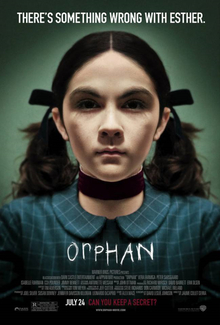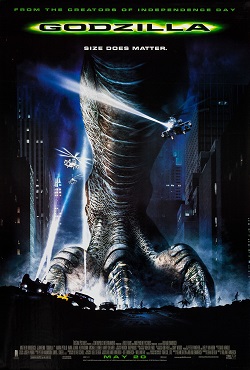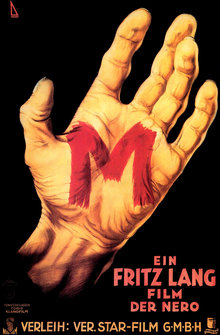
Jaume Collette-Serra's Orphan (2009) is, I think, quite a strong film, if you're not expecting too much. And that's perfectly fine. Because despite a kind of ridiculous twist, the film succeeds with a strong cast, an excellent execution, and by not betting too heavily on said twist. Consider for contrast something like Secret Window (2004). When a twist like that one is revealed, the film is pretty much over. There's plenty of cleaning up to do, like sorting out final confrontations, etc., but the twist is the most noteworthy point.
So if Orphan sounds appealing by contrast, see it. Because I'm gonna spoil this thing below.
---
For some reason, I am a fan of the "evil child" trope. Besides Orphan, a couple of examples that I really enjoyed, despite any shortcomings, are The Bad Seed (1956) and The Good Son (1993). With Patty McCormick in the former, and Macaulay Culkin and Elijah Wood in the latter, it's apparent that a good "evil child" film has to overcome the hurdle of finding the right child actor(s) to carry the film. In a horror film, the child is usually relegated to the back of the story, because killing each other and dealing with monsters and madmen are typically grown up chores. In addition, it's often inappropriate for kids to be too closely involved with horror subject matter. More often than not, a child just be something to rescue from harm's way. Using the child to tell the story is a taller order. Kubrick's The Shining is unusual in that a very young boy is one of its primary characters, and sometimes it feels like the film suffers because Danny is not a particularly dynamic character, but simultaneously benefits from a more restrained, realistic portrayal.
Orphan uses three exceptionally strong child actors, particularly eleven-year-old Isabelle Fuhrman as Esther. Esther is (spoiler) a 33-year-old psychopath with a (medically inaccurate) case of hypopituitarism that allows her to pose as a 9-year-old orphan whose modus operandi involves getting adopted, making advances on the father, and killing the whole family when she gets rejected. With this plotline, Furhman gets to play the angelic daughter, the disturbed child, the terribly unsettling underage seductress, and the murderous adult. She delivers each so convincingly that when it is revealed that Esther is not really a child, her character ceases entirely to seem like a child on screen.
Another, in my opinion, merit to the "evil child" trope is the fact that it can be presented to any audience. The same story, of the charming kid that no one is willing to believe has a dark side, is right at home in this R-rated production, something PG-13, a 1950s family movie or stage play (The Bad Seed), a made-for-TV movie, or a Saturday morning episode of "Goosebumps."
Orphan handles its scares in an unusual way. There is a repeated scene early in the film where the mother is in the bathroom, and a shaky camera is behind her head, suggesting someone is behind her. Then, her face is shown in the mirror, and as she closes the mirror, the space behind her is reflected. The first time, no one is there. The second time, her husband is over her shoulder, innocently enough. Similarly, there is one scene where the open refrigerator door is shown, suggesting that someone may be standing right behind it, but there isn't, and the classic throwing back the shower curtain but no one's hiding there scene. These scenes were totally "called out," as it were, in Scream 4 (2011) for being overdone, but clearly, in 2009 those moves were obvious enough to be played as they were in Orphan, extremely self-awarely. In a PG-13 film, these false alarms are some of the best material in the age-appropriate vocabulary, but in Orphan, they are understood by the audience and by the director to be too obvious to carry any weight.
But Collett-Serra understands that these moves are still fun; you just can't support a movie on them anymore. It's refreshing to see an R-rated film that really plays the whole spectrum for scares, rather than taking the gore to 11 the whole time. A couple of "no one in the mirror" scenes and a few speeding cars that for once don't splatter someone play significantly with the viewer's expectations, so that the actual violence is more impacting. A problem with a PG-13 horror film is that there is an unshakable safety in the knowledge that the violence is not going to get out of hand. The cool thing about Orphan is that it feels like a PG-13 movie most of the time, then turns on a dime and delivers those full-voiced, R-rated scares.
This type of plot is also able to do something unusual by giving the audience different kinds of experiences with the various sympathetic characters. Sister Abigail dies like a typical slasher victim. She's not a main character, and she's dispatched rather brutally. The murder of the father is particularly intense, because as a main character, he should be safe. We also get to experience the plights of the siblings and the mother, who bring differing youthful and mature concerns and interpretations of the situation to the table. They also have a lot in common. Usually, in stories like this one, the kids spend the whole movie meeting the burden of proof to convince the adults that something is wrong. Orphan puts the mother in that situation, which is a compelling complication. In identifying and sympathizing with the mother, we still get to feel that frustrated, childlike state of not being believed, which is absolutely critical to any "Goosebumps" plot (kids know there's a monster in the basement; clueless grownups refuse all evidence).
So Orphan employs the whole palette: the continuum between children's and adult's anxieties, the age range of child to adult actors, the techniques from innocuous scares to brutal horror, and the freedom of electing to keep with or break from tradition with a timeless trope. Like Pan's Labyrinth, Orphan is a grown up, edgier version of the same fears we've harbored, not just historically, decade by decade of filmmaking, but as we've grown up with horror.
If you've "grown up with horror" at all like I have, from Alvin Schwartz stories, to Goosebumps, to the Universal monsters, Vincent Price, Psycho, The Shining, all the way into anything from F.W. Murnau to Takashi Miike, then I shall hope that Orphan will feel very natural to you.
-----
A couple of additional notes of praise:
I liked very much the way the last few minutes were handled. I was immediately suspicious that Esther was not down for the last time in the greenhouse, and of course, when the police arrive, her body is gone. Her next appearance is shocking enough, but it's not wasted in a final jump scene. The film continues to overcome stereotypical silly endings in the last struggle on the frozen lake. Orphan could have adopted the overdone ending of giving Esther a quick back-from-the-dead jump (Fatal Attraction, Children of the Corn,) before being decisively killed, but this film sidesteps by letting Esther understandably survive a clearly non-lethal injury. Her next appearance is not wasted by having her appear one last time just to get really killed. The fight between Esther and the mother on the frozen lake is worth it, and that scene isn't wasted with what seemed like the obvious stupid conclusion: the youngest daughter taking the pistol and shooting Esther as she attempts to stab the mother. Thankfully, the daughter misses in an age-appropriate fashion, breaking the ice open. For me, the commitment to not making stupid obvious choices more than makes up for the silly last "badass line," a cliche which has never, and probably will never, ever, be delivered convincingly. Because people getting stabbed are not going to pause to say something awesome right before they kill their adversary.
And as a general rule, guns are not scary in movies. Are they too pedestrian? Too impersonal? For some reason, giving Esther a revolver in this film works. Perhaps it's because a gun is usually given too much screen time, across all genres. Suspense is derived from the presence of the gun, which may or may not be fired. Such scenes tend to play like one of Tarantino's Mexican standoffs. Strangely, the presence of guns in a scene tends to encourage rational conversation, because no one wants to pull the trigger (otherwise, they would have done it already). A gun is such a symbol of strength and power- it appears as an assured kill, and any character who has been shot is presumed dead, until they make some remarkable recovery. Because a gun is a symbol of strength, that symbolism is typically deconstructed/reversed/undone as a way to throw off the audience. With a defensive weapon, the wielder's safety is ensured in the eyes of the audience... right before he's stabbed in the back. As an offensive weapon, it raises the strength of a villain to its highest point, such that it must be immediately undone by some surprising heroism from the would-be victim, like the final basement shootout in The Silence of the Lambs. Orphan manages to creatively expand the vocabulary of the firearm, making it scary for once. I was not convinced before that it could be done.








